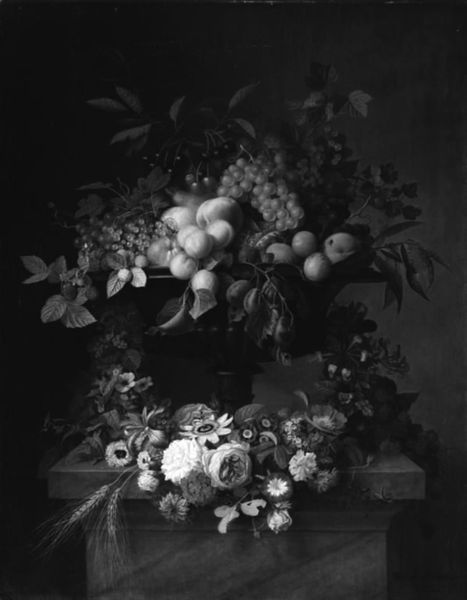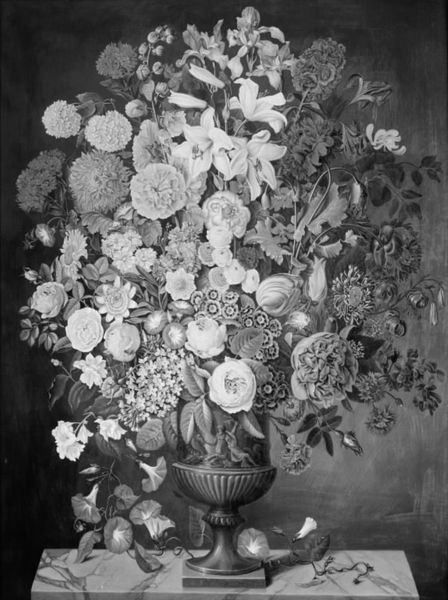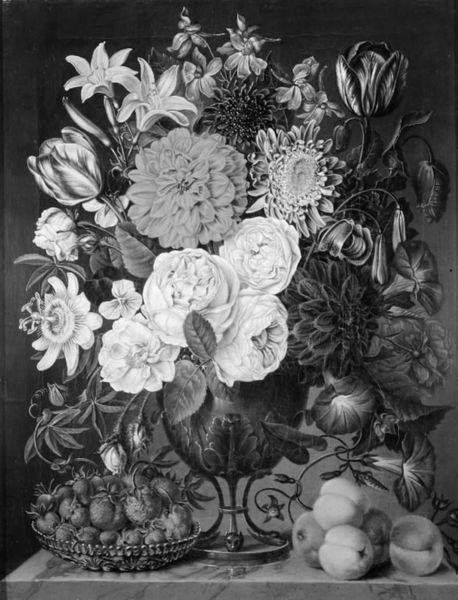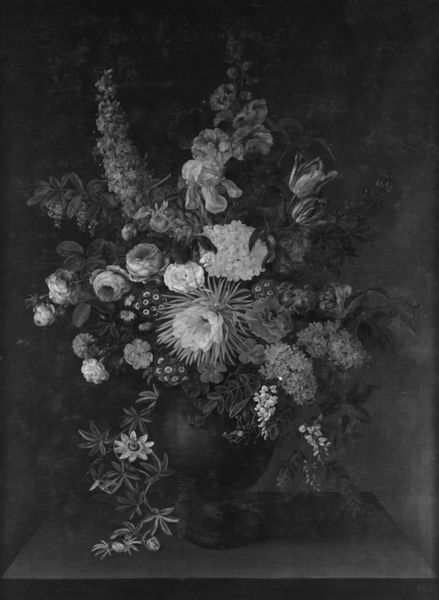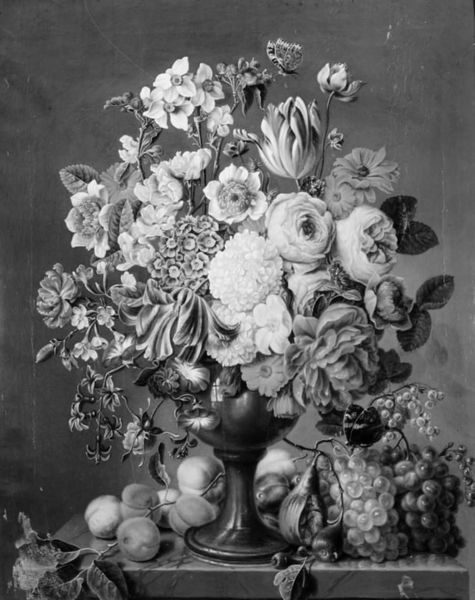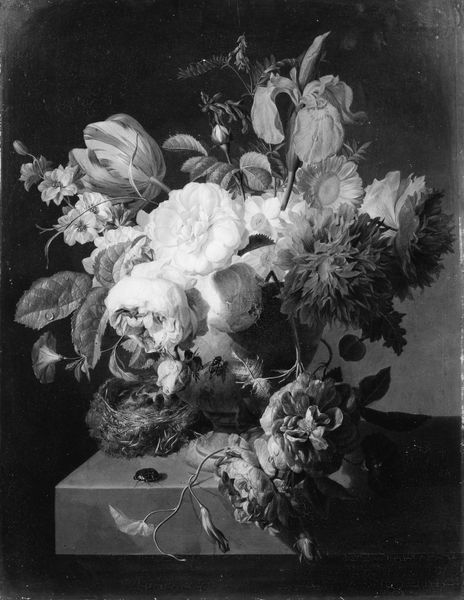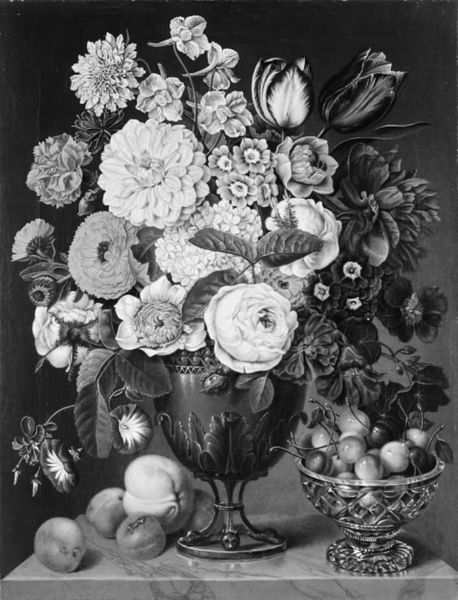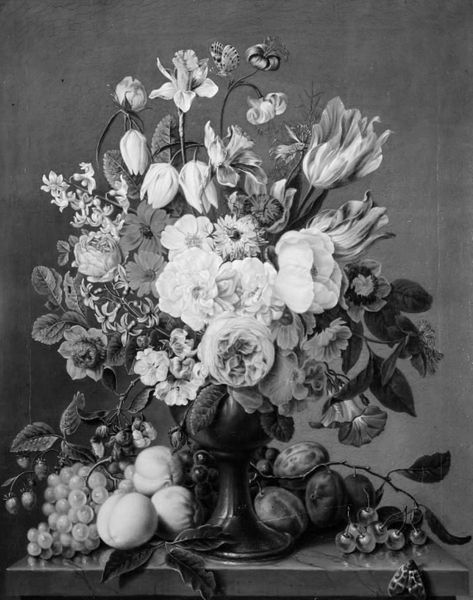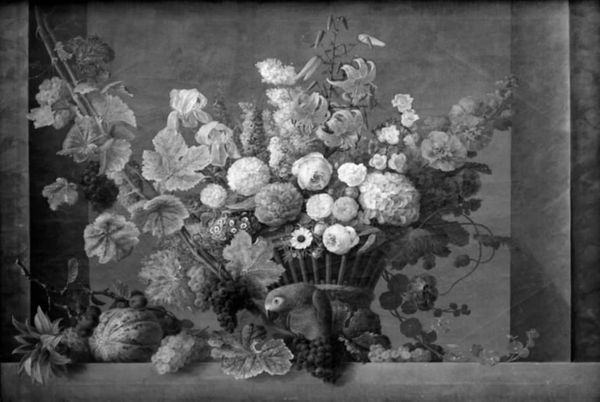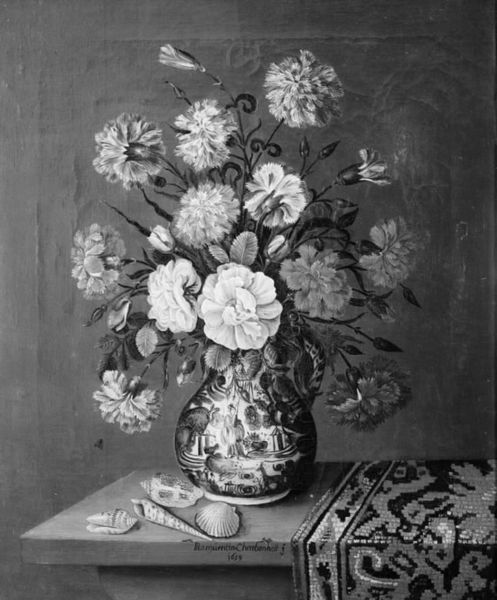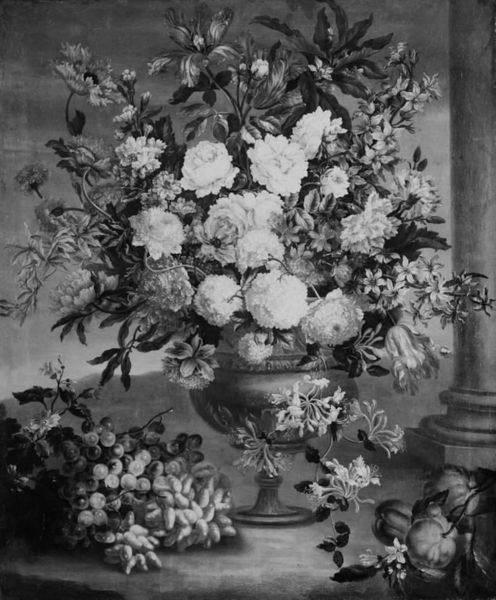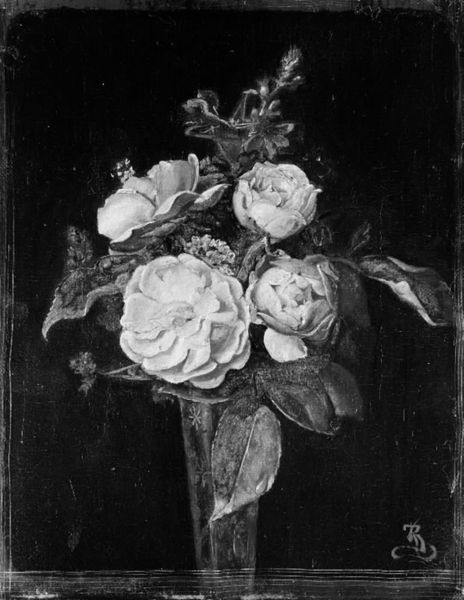
painting, canvas
#
painting
#
canvas
#
romanticism
#
black and white
#
academic-art
Dimensions: 100 cm (height) x 131 cm (width) (Netto)
Curator: It is extraordinary to see the garland shape against this backdrop, like an arch, right? Editor: It feels like entering a darkened theatre before the curtain rises, there is a solemn almost reverent atmosphere. Is this "Blomsterguirlande," or "Flower Garland," as the title translates? Painted by C.D. Fritzsch. Curator: Yes, the artist completed this piece between 1780 and 1841 using painting on canvas. The floral arrangement carries numerous symbols and evokes a narrative steeped in academic art traditions. The romantic movement loved things that gave glimpses to life stages. Here this can be felt in a beautiful flower pot made out of what seems to be an overripped gourd and a selection of fruits, perhaps some of them already on the brink of spoiling, like ripe grapes and some softer fruits. Editor: I am not fully sure it romantic, though. But it looks that its monochrome pallette actually adds to the gravitas you point. What does this colour void tell you? Curator: It suggests a deeper symbolic layer, guiding our eyes and minds to specific icons rather than vibrant displays. The muted tones serve to almost abstract the flowers themselves from what they would be as decorations, and more as meditations to be interpreted. Do you see what flowers do you think could be arranged in the pot? Editor: Maybe lilacs, wisteria, roses... peonies, too. What intrigues me, though, is this play between the natural—flowers and fruits—and the artificial—the presentation, how nature is being domesticated as a form of status and refinement. Curator: I fully see your point! The garland, traditionally a symbol of celebration and triumph, now feels almost elegiac, perhaps because is deprived of light or life... that could be seen also as a dark message: that not even flowers and art would succeed from escaping the cruel passage of time, death itself, decay, nothing lives forever, so maybe it would be seen a still life representing what lasts of life in its purest sense Editor: Precisely, I feel like Fritzsch also makes a powerful statement about human agency, its limitations in nature and power. Even arranged and immortalised on canvas, the flowers still wilt, hinting at an acceptance or acknowledgement of one’s limits. What do you think our audience may feel after exploring these images? Curator: It will leave a lasting impact on the beholder and allow them to meditate not only about what is depicted in still lifes, but what the artists tried to point to as the true nature of living beings and its course. Editor: It feels to me that to accept our fragile temporality it can perhaps be empowering too and maybe its a sort of meditation towards hope through this acceptance.
Comments
No comments
Be the first to comment and join the conversation on the ultimate creative platform.

